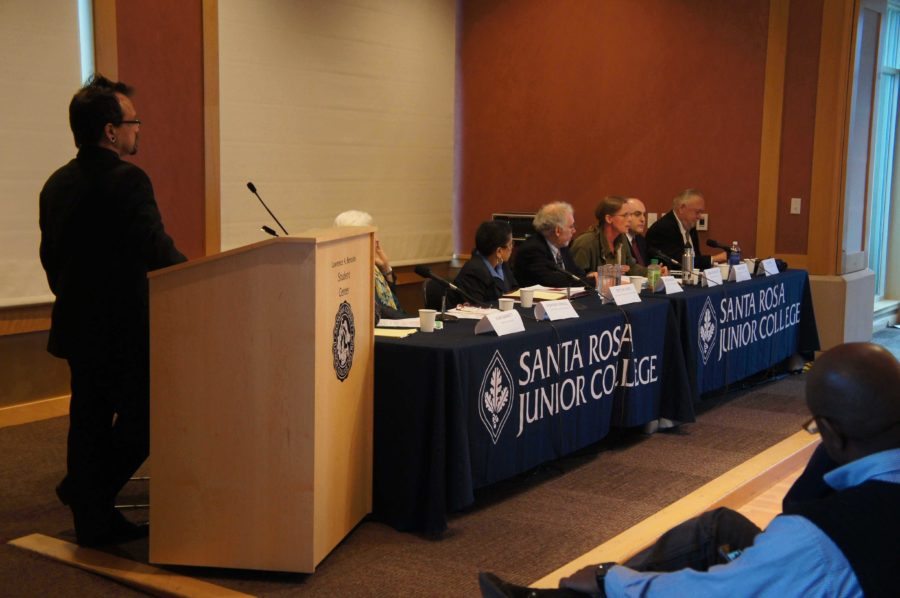Oakland police officers killed Rashidah Grinage’s husband and son in 1993 at her home in a misguided effort to quarantine her son’s dog. After this life-changing event she learned how much power police officers have. Grinage, executive director of People United for a Better Life in Oakland, was one of seven panelists that Santa Rosa Junior College Student Trustee Robert Edmonds brought together for a “Community Oversight of Police in Sonoma County” panel discussion Jan. 30.
“All they have to establish is they were in reasonable fear for their safety and they had no other option available and your civil rights have been terminated and they have been justified,” Grinage said. “To say it’s an uphill struggle to establish civilian oversight is an understatement; it is an enormous challenge.”
When a Sonoma County sheriff deputy shot and killed 13-year-old Andy Lopez who was carrying a toy gun Oct. 22 2013, the incident ignited anger protests and a movement to form a community police oversight board.
Edmonds asked the panelists to give ideas about what’s needed in civilian oversight and what is needed for boards to be effective.
Jayson Wechter, a member of The National Association for Civilian Oversight of Law Enforcement Board of Directors, started off with his three ideas: adequate authority, staff and resources, independence and the support of government officials and the community.
“I do not believe that it is possible to control the functioning of police through civilian oversight at this time,” Andrea Pritchett, founding member of Berkeley Copwatch, said. “The community through its own processes can create and generate more pressure on the politicians… than the civilian oversight commission.”
Pritchett said that the YouTube videos of police misconduct have been more effective to isolate police and ruin their credibility so they can’t function. Her first idea was transparency: not having government and police documents kept from the public. Next was independence. An oversight board that merely sends recommendations to a city manager or chief of police is ineffective. Lastly, she stressed empowerment: the power to hire, fire and discipline officers.
“Unless the city is willing to meet those three criteria, I think we have to look elsewhere for answers,” Pritchett said.
Mark Smith, independent police auditor for BART, echoed what others said about getting state holders on board. Smith also said to put together airtight governing policies, so when something happens one can easily show how it violates policy. He also recommended continuous outreach for getting the word out about police and police oversight boards.
Dan Silva, investigator of police misconduct complaints in San Francisco, said the biggest challenge one will face with creating a police oversight community, if one wants accountability, is to sever liability from right and wrong. “Whatever happened to right and wrong? It was replaced with legal or illegal,” he said.
Silva wants more out of police. “We get told on a daily basis, almost, that these are our finest. Isn’t it then fair and reasonable to demand from the finest, the finest?” Although he said all this, he emphasized he is not anti-police, but against those who do wrong and know they’re doing wrong.
“You should control the police department that serves you. Not the other way around,” Silva said.
Related to this is the Advisory Board for police oversight in Sonoma County. Twenty-one people were elected by government officials to be on this board, including SRJC Student President Omar Paz Jr. who was elected by the sheriff, and Edmonds who was elected Vice Chair.
Paz Jr. said he is very excited for the outreach and the potential dialogue that will follow. Paz. Jr. is the youngest on the board and said it is hard to represent 24,000 students. He is trying to get more youth involved.
So far the board has put together sub boards in charge of community outreach, looking at civilian review and reviewing police. The board’s next meeting is 6 p.m. Feb. 10 at 2227 Capricorn Way, Santa Rosa.




